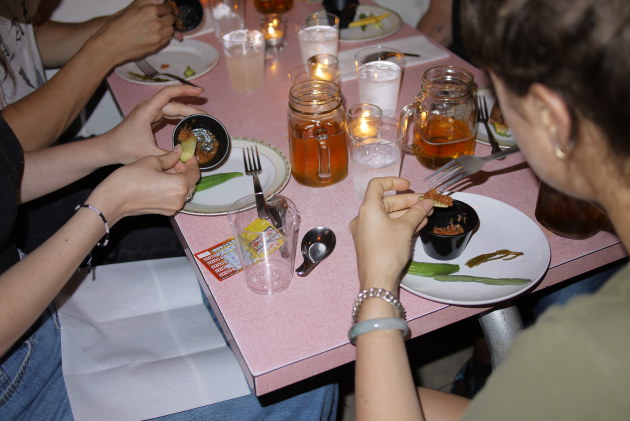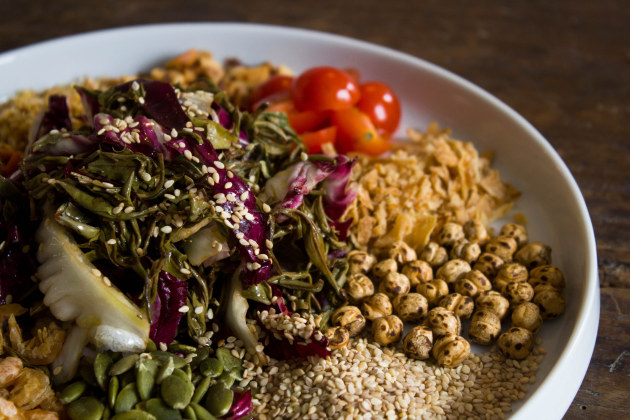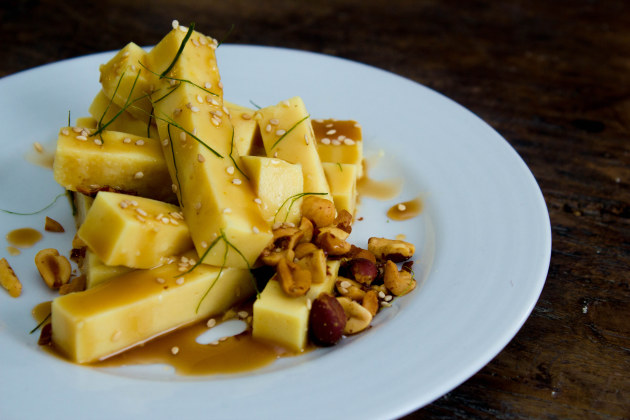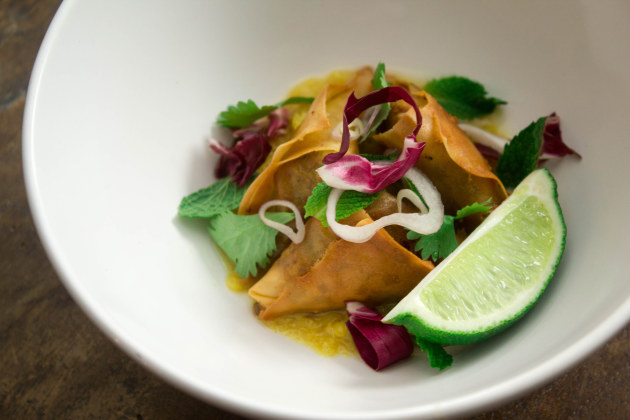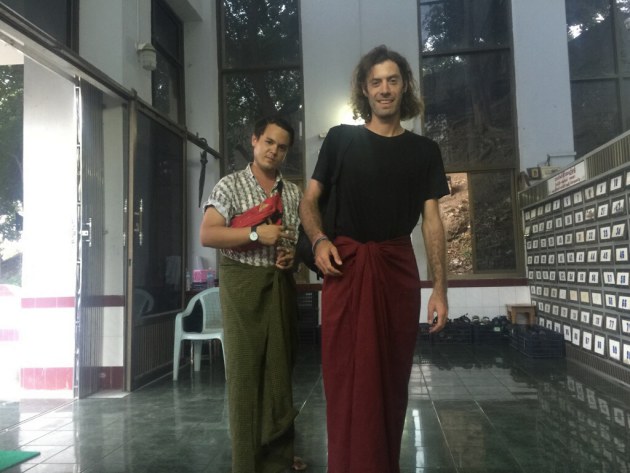Lucky Number, A Delicious Burmese Pop-Up, Grows in Brooklyn
Photos courtesy of Lucky Number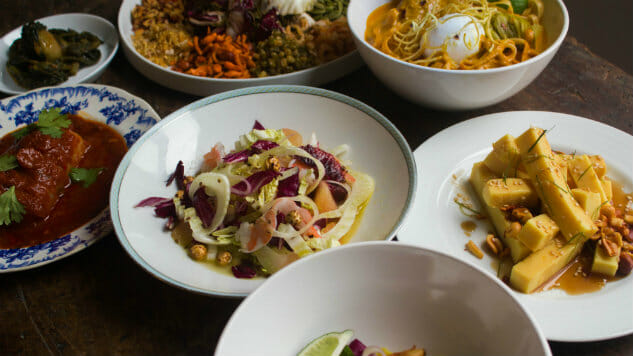
Mike Sablan wanted to be a business consultant when he was in college. Thank our lucky stars he didn’t do that, because when the half-Burmese chef later met visual artist and musician Tyler Drosdeck, they created Lucky Number, a Burmese pop-up starring rich, palate-startling dishes such as lahpet thoke, a preserved tea salad.
Burmese food is not a familiar cuisine in America — yet. Though immigrants from Myanmar are one of the largest refugee populations in the States, Burmese restaurants are still sparse in large metropolises like New York. Mention mohinga, the rice noodle and fish stew known as the national dish of Myanmar, and few will know its ingredients include lemongrass, banana tree stem, ginger, fish paste and fish sauce. Fewer still know that Myanmar has over 100 ethnic groups, and that mohinga will vary according to the region, or that Yangon and Mandalay have glorious amounts of stalls to please any street food flaneur.
At a recent pop-up collaboration with Compagnie des Vins Surnaturels, Lucky Number featured an exciting, palate-startling mashup of Compagnie’s French cuisine and their Burmese street foods. From a pork rind with a smooth-as-silk balachaung (dried shrimp relish) liver mousse, to a tangy curried fish with fragrant carottes râpées, French and Burmese flavors were beautifully paired. Lucky Number is innovative, and not afraid to cross borders, plating chickpea tofu with fried samosa triangles, all of it smattered with lemongrassy crispy onions and flavored with a tamarind curry paste that had the texture of butterscotch.
We spoke with Lucky Number creators Tyler Drosdeck and Michael Sablan in advance of their upcoming September 4 pop-up at Don Muang Airport, the restaurant at popular music venue Baby’s All Right in South Williamsburg, Brooklyn. No RSVP’s are necessary, as the Burmese menu will be served a la carte from 6 to 10 p.m.

Paste: What’s the Lucky Number origin story?
Tyler Drosdeck: I’ve always fantasized about opening a restaurant; I’ve just been waiting for something to say or add to the landscape of New York, where there is already so much amazing food available at all hours. A couple years ago, I found myself in Myanmar, a side trip to a longer journey I took to Nepal. A few days into my trip, I was sitting in a cafe in Bagan and had a very sudden realization that the idea seemed to be right in front of me, literally in the form of tea salad. Then shortly after returning, you might say under auspicious circumstances, I met Mike. It turned out Mike he was a chef and his mother was born in Yangon. We chose the name partly as a reference to the serendipity of our meeting.
Paste: The flavors at Lucky Number are largely unfamiliar to Americans, but you manage to make them approachable. Was that important to you?
TD: Yes, very much so. The aim is not so much to cater specifically to an American palette, nor to imitate Burmese dishes, but to create something that combines our cooking history with these flavors we’ve encountered. I feel that the whole idea of “authenticity” is a hollow concept, especially in the arena of what gets label “ethnic food”.
To give an example, so much of what is associated with the type of Indian food that is popular in the U.S. was brought to Delhi and other Northern Indian cities by Persians during the Mughal Empire. Traders have historically been a catalyst for cultural exchange and we see the Lucky Number project through that lens. For us, it’s much more interesting for Lucky Number to be conversation rather than imitation.
Mike Sablan: Absolutely. It’s helpful that Burma’s neighbors already have garnered a great deal adoration from Western palates so we can highlight those similarities in order to tell our story through food. On top of that we try to feature local, seasonal ingredients in place of some harder to get varieties when possible and appropriate. These two aspects tend to unarm our guests so that we might weave in some more eccentric flavors.
-

-

-

-

-

-

-

-

-

-

-

-

-

-

-

-

-

-

-

-

-

-

-

-

-

-

-

-

-

-

-

-

-

-

-

-

-

-

-

-


